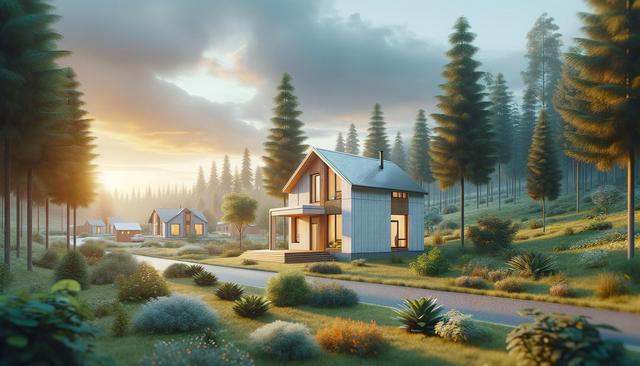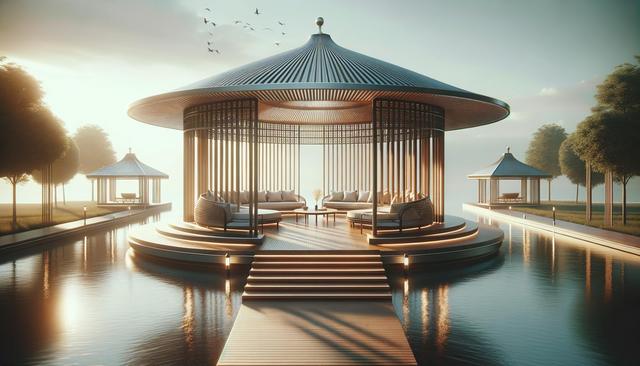Understanding the Cost Structure of Prefabricated Homes
When examining prefabricated house prices, it’s important to understand the breakdown of costs involved. Unlike traditional homes, prefabricated houses are constructed off-site and then assembled on location, which can significantly reduce labor and material waste. The price per square foot generally ranges from $50 to $200, depending on various factors such as the complexity of the design, type of materials used, and the level of customization. Standard models with minimal customization tend to be on the lower end of the price scale, while highly personalized or luxury prefab homes can reach the upper range.
Some of the most common elements that influence the price include:
- Foundation type (slab, crawl space, or basement)
- Exterior finishes and roofing materials
- Interior features like flooring, cabinetry, and fixtures
- Utility hookups and installation
Understanding these components helps in estimating the total cost more accurately and allows future homeowners to make informed financial decisions.
Comparing Prefabricated and Traditional Home Costs
One of the main advantages of prefabricated homes is their affordability compared to traditional construction. Traditional homes often involve higher labor costs, longer timelines, and more unpredictable expenses due to on-site construction variables. In contrast, prefabricated homes benefit from controlled factory conditions that streamline the building process and minimize delays.
On average, traditional homes can cost anywhere from $150 to $300 per square foot, depending on location and materials. This makes prefabricated homes an attractive alternative for budget-conscious buyers. Additionally, the faster construction timeline often translates to reduced interim costs such as:
- Temporary housing during construction
- Extended loan interest payments
- Increased labor fees due to time overruns
While both building methods have their merits, the cost savings associated with prefabricated homes can be substantial, especially for first-time buyers or those looking for efficient housing solutions.
Customization and Its Impact on Pricing
While standard prefabricated models offer cost efficiency, many buyers opt for customization to better suit their lifestyle and design preferences. Customizations can range from modified floor plans to upgraded fixtures and finishes. However, it’s important to note that each additional feature can incrementally raise the overall price per square foot.
Examples of common upgrades include:
- Energy-efficient windows and insulation
- Smart home technology integration
- High-end kitchen appliances
- Luxury bathroom fittings
Buyers should carefully balance their desire for personalization with their budget constraints. Consulting with manufacturers about customization options and their associated costs early in the planning phase can help prevent financial surprises and ensure the final product aligns with expectations.
Geographic and Regulatory Influences on Price
Location plays a significant role in determining prefabricated house prices. Factors such as local labor rates, transportation costs, zoning laws, and building codes can all affect the final cost of a prefabricated home. For instance, transporting modular sections over long distances adds fuel and logistics expenses, while regions with stricter building regulations may require specific materials or design modifications.
Other location-based considerations include:
- Permitting and inspection fees
- Access to utility connections
- Soil testing and land preparation
- Climate-related design needs
Individuals planning to build a prefabricated home should research their regional requirements thoroughly. Collaborating with local builders or consultants familiar with prefab construction in that area can streamline the process and help avoid unexpected costs.
Long-Term Savings and Financial Benefits
Beyond the initial construction savings, prefabricated homes offer long-term financial benefits. These homes are often built with energy efficiency in mind, incorporating modern insulation techniques and efficient heating and cooling systems. Over time, homeowners may experience lower utility bills and reduced maintenance costs due to the high-quality materials and standardized construction methods used in prefab homes.
Additional long-term financial advantages include:
- Reduced property taxes in some jurisdictions
- Lower insurance premiums due to modern safety standards
- Potential for higher resale value in growing prefab markets
While the upfront savings are a strong incentive, the ongoing cost-efficiency of owning a prefabricated home adds another layer of value. For those seeking a practical and financially sound housing option, prefabricated homes present a compelling case.
Conclusion: Making an Informed Decision
Understanding prefabricated house prices requires looking beyond just the per-square-foot estimate. By considering factors such as customization, geographic location, and long-term savings, prospective homeowners can better assess the true value of this housing solution. Whether aiming to reduce build time, save money, or create a more sustainable living space, prefabricated homes offer a viable path forward for a wide range of buyers. With careful planning and informed decision-making, these homes can meet both budgetary and lifestyle needs effectively.


